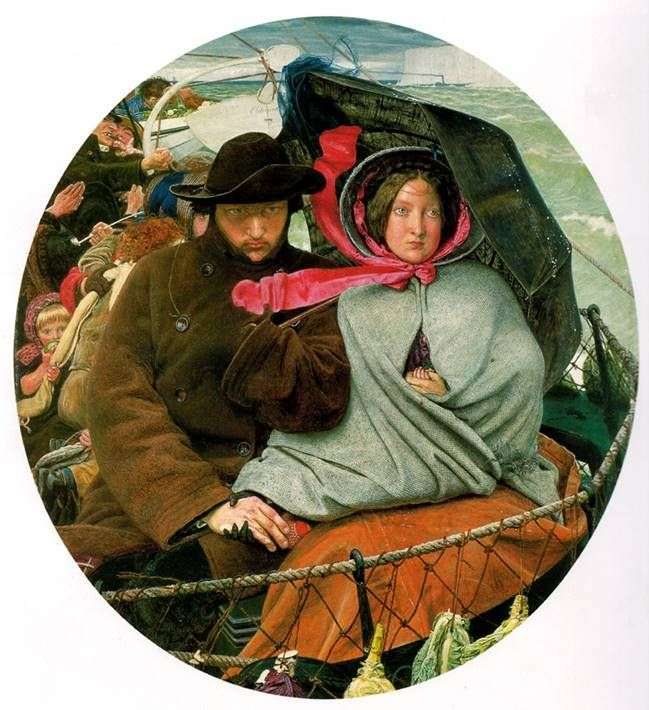
Madox Brown began work on the painting in 1852, in connection with the departure of his close friend, the Pre-Raphaelite sculptor. Thomas Wolner in Australia in July of the same year. In the 1850s, about 350,000 people emigrated from England every year. Brown, at that time experiencing serious financial difficulties, himself was thinking about moving to India with his wife and children. He defined his position as “very difficult and a little crazy”.
The picture shows the couple, holding hands, they turned away from the English shore. In the background, the passengers of the ship are visible. A girl with an apple in her hand is the daughter of the artist Catherine. The woman squeezes the handle of another child, closed by her mantilla. The household detail – vegetables, hung on the handrails – indicates that travelers have a long way to go. The clothes of the spouses indicate that the family belongs to the middle class, and they leave the country not for the reasons that cause emigration of the working classes; in the exhibition catalog of 1865 Brown develops this theme: “Educated people are connected with their country in really other connections than an illiterate person whose main consideration is food and physical comfort.”
Formally, Brown was not a member of the Pre-Raphaelite Brotherhood, but “Farewell to England”, like many of his paintings, demonstrates his commitment to the doctrines of the movement. Striving for the greatest credibility, the artist wrote in the open air in the garden of his house in Hampstead. mostly on cloudy days. His wife, he also painted in the open air, working even when the snow fell. As always, he wrote slowly, carefully working through the details, in his diary Brown noted that the drawing of some waving ribbons hats took four weeks.
On the pencil drawing to “Farewell to England”, executed in 1852, noticeable inscription on the lifeboat White Horse Lin [e] of Australi [a], – a hint of Wolner’s departure to Australia. In the final version on board the boat, from which the boy unloads vegetables, the ship’s name “Eldorado” is seen, an ironic reference to the name of the mythical country.
For the picture, Brown chose an unusual form – a tondo. characteristic of the painting of the Italian Renaissance. It required special skill to fit into it a multi-figure composition. Thanks to this format, the viewer’s view focuses on the two main characters of the picture, their tense faces, and only then switches to the other passengers. The exact watercolor copy of the Birmingham variant, created between 1864-1866, is in the Tate Britain gallery. Watercolor was intended for George Ray Birkenhead, the patron saint of the Pre-Raphaelites. According to some reports, part of the work was done by Brown’s daughter Catherine. There is also a detailed pencil sketch of the whole picture. All options have the form of a tondo, but differ in color.
 Labor by Ford Madoxon Brown
Labor by Ford Madoxon Brown Jesus washing Peter’s feet by Ford Madoxon Brown
Jesus washing Peter’s feet by Ford Madoxon Brown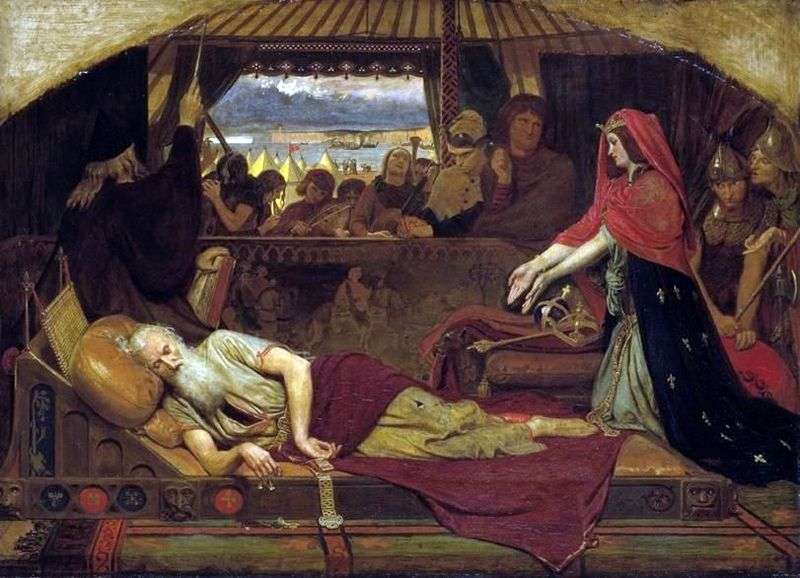 Lear and Cordelia by Ford Madoxon Brown
Lear and Cordelia by Ford Madoxon Brown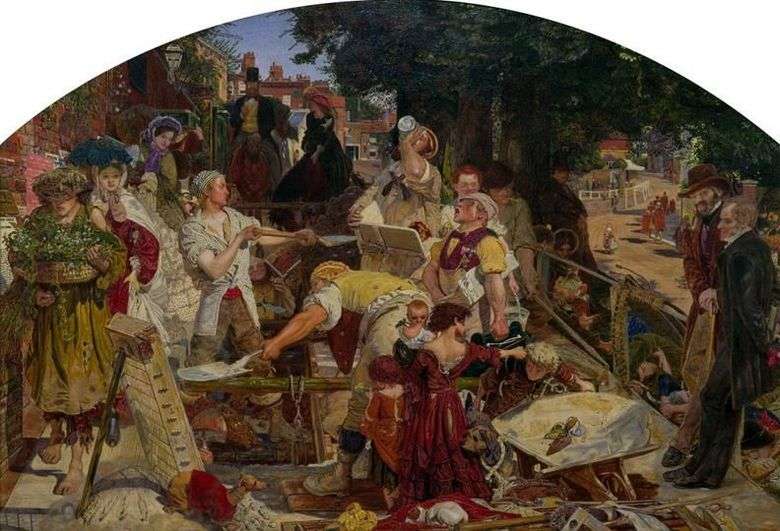 Trabajo – Ford Madoxon Brown
Trabajo – Ford Madoxon Brown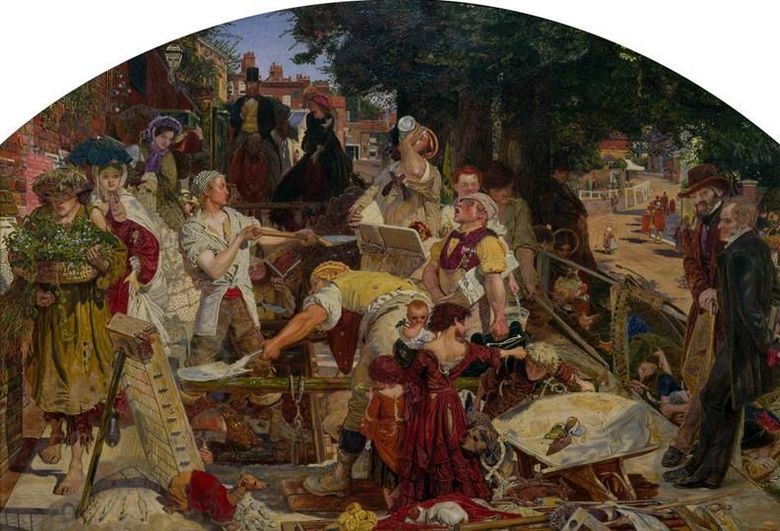 Travail – Ford Madoxon Brown
Travail – Ford Madoxon Brown Adieu à l’Angleterre – Ford Madoxon Brown
Adieu à l’Angleterre – Ford Madoxon Brown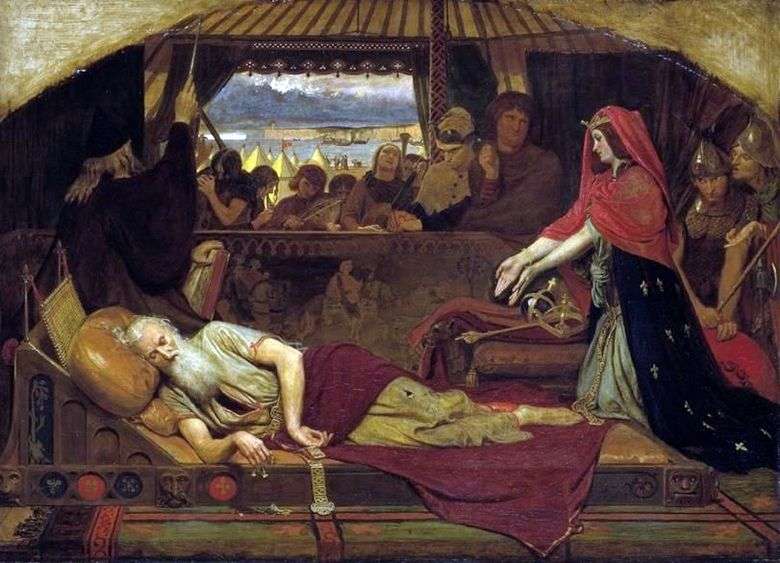 Lear y Cordelia – Ford Madoxon Brown
Lear y Cordelia – Ford Madoxon Brown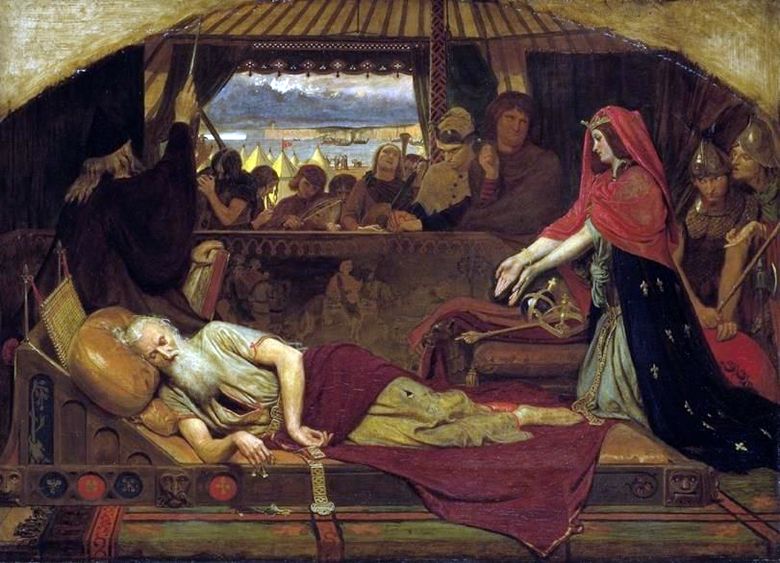 Lear et Cordelia – Ford Madoxon Brown
Lear et Cordelia – Ford Madoxon Brown